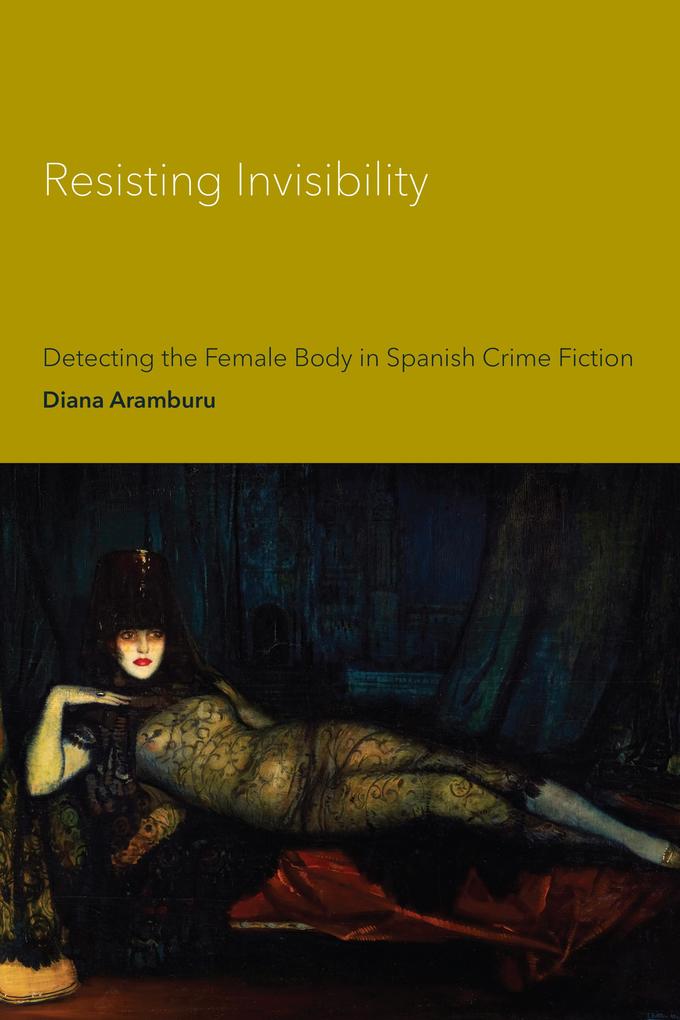
Zustellung: Fr, 31.01. - Mi, 05.02.
Versand in 2 Wochen
VersandkostenfreiBestellen & in Filiale abholen:
Engaging with pre-feminist and male-authored crime literature, Resisting Invisibility offers a comparative reading of women’s bodies as represented in Spanish crime literature from the mid-nineteenth century to the present. Utilizing the twin concepts of visibility and invisibility, the book establishes a genealogy of differing viewpoints regarding women’s positions in these narratives, before and after the birth of the modern Spanish female detective.
This examination of the politics of female visibility expands our understanding of the aesthetic regimes that have governed the female body from the early phases of the genre’s evolution. While most scholars understand the feminization of the crime genre as a response to second-wave feminism, Resisting Invisibility demonstrates that even in the earliest representations of delinquent women, the politics surrounding the female body are problematized and are more complex than previously conceptualized. Drawing on gender and queer studies, Resisting Invisibility investigates the gendering of crime fiction, forcing us to reconsider the literary history of female visibility and prompting us to establish an alternative genealogy for Spanish crime literature.
This examination of the politics of female visibility expands our understanding of the aesthetic regimes that have governed the female body from the early phases of the genre’s evolution. While most scholars understand the feminization of the crime genre as a response to second-wave feminism, Resisting Invisibility demonstrates that even in the earliest representations of delinquent women, the politics surrounding the female body are problematized and are more complex than previously conceptualized. Drawing on gender and queer studies, Resisting Invisibility investigates the gendering of crime fiction, forcing us to reconsider the literary history of female visibility and prompting us to establish an alternative genealogy for Spanish crime literature.
Inhaltsverzeichnis
Acknowledgements
Introduction: Detecting the Female Body in Gendered Mysteries
1. Reading the Female Delinquent in Early Spanish Crime Fiction
2. Investigating the "Eye" in Twentieth-Century Spanish Crime Novels
3. Parodying the Male Gaze in Lourdes Ortiz’s Picadura mortal
4. A New Politics of Visibility in the Lònia Guiu Series
5. Lesbianizing the Genre
Conclusion: Exploring an Alternative Crime Fiction Genealogy
Notes
Bibliography
Introduction: Detecting the Female Body in Gendered Mysteries
1. Reading the Female Delinquent in Early Spanish Crime Fiction
2. Investigating the "Eye" in Twentieth-Century Spanish Crime Novels
3. Parodying the Male Gaze in Lourdes Ortiz’s Picadura mortal
4. A New Politics of Visibility in the Lònia Guiu Series
5. Lesbianizing the Genre
Conclusion: Exploring an Alternative Crime Fiction Genealogy
Notes
Bibliography
Produktdetails
Erscheinungsdatum
17. Mai 2019
Sprache
englisch
Seitenanzahl
296
Autor/Autorin
Diana Aramburu
Verlag/Hersteller
Produktart
gebunden
Gewicht
590 g
Größe (L/B/H)
231/160/23 mm
ISBN
9781487504595
Entdecken Sie mehr
Bewertungen
0 Bewertungen
Es wurden noch keine Bewertungen abgegeben. Schreiben Sie die erste Bewertung zu "Resisting Invisibility" und helfen Sie damit anderen bei der Kaufentscheidung.










